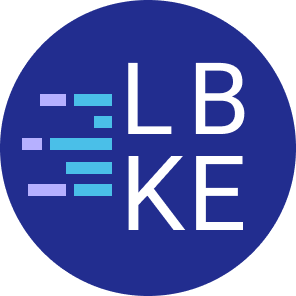 Based on Remix Indie Stack
Based on Remix Indie Stack
Eurodance Stack is the Remix stack for GraphQL developers.
Learn more about Remix Stacks.
npx create-remix --template VulcanJS/eurodance-stack
You can also run Eurodance Stack on CodeSandbox Projects. As it is currently in beta (06/2022), you need to ask for an early access, and then search for "VulcanJS/eurodance-stack" when creating your project.
NOTE: if you clone this repo directly, and don't use create-remix, you will need to run yarn remix init manually after the first install!
GraphQL
- Invisible GraphQL: work transparently with GraphQL, without ever depending client-side
Vercel deployment
Remix stacks hosts on Fly out-of-the-box. For historical reasons Vulcan prefers Vercel, but you can deploy your Remix app almost anywhere very easily.
- We already setup remix to run a specific "vercel.server.js" on Vercel
- We already set a minimum vercel.json
- Create a new project on Vercel or run Vercel CLI to setup the project:
vercel(answer the questions) - IMPORTANT: add a
SESSION_SECRETto your Vercel app secrets, to do this you can run the following commands:If you don't have openssl installed, you can also use 1password to generate a random secret, just replacevercel env add SESSION_SECRET=$(openssl rand -hex 32)$(openssl rand -hex 32)with the generated secret. - If using SQLite, set
DATABASE_URLtofile:./tmp/data/data.db?connection_limit=1. Important note: the data will not persist! This is only for demonstration purpose. You should find an host that supports SQLite or wait until we introduce MongoDB in this stack.
CodeSandbox Projects
Eurodance supports being installed as a CodeSandbox Project (beta feature).
MongoDB supports (via Prisma)
Remix stacks works with Prisma out-of-the-box, and various databases. For historical reasons, Vulcan prefers Mongo, but you can switch very easily to any database.
Advanced GraphQL
- A GraphQL resource route with GraphQL Yoga
- Vulcan Fire Engine
Development tools
- A Storybook based development workflow. Write a story, get unit and visual regression tests for free.
And many others, follow the umbrella ticket on GitHub to learn more about our roadmap.
- Fly app deployment with Docker
- Production-ready SQLite Database
- Healthcheck endpoint for Fly backups region fallbacks
- GitHub Actions for deploy on merge to production and staging environments
- Email/Password Authentication with cookie-based sessions
- Database ORM with Prisma
- Styling with Tailwind
- End-to-end testing with Cypress
- Local third party request mocking with MSW
- Unit testing with Vitest and Testing Library
- Code formatting with Prettier
- Linting with ESLint
- Static Types with TypeScript
Not a fan of bits of the stack? Fork it, change it, and use npx create-remix --template your/repo! Make it your own.
Click this button to create a Gitpod workspace with the project set up and Fly pre-installed
-
Initial setup: If you just generated this project, this step has been done for you.
npm run setup
-
Start dev server:
npm run dev
This starts your app in development mode, rebuilding assets on file changes.
The database seed script creates a new user with some data you can use to get started:
- Email:
rachel@remix.run - Password:
racheliscool
This is a pretty simple note-taking app, but it's a good example of how you can build a full stack app with Prisma and Remix. The main functionality is creating users, logging in and out, and creating and deleting notes.
- creating users, and logging in and out ./app/models/user.server.ts
- user sessions, and verifying them ./app/session.server.ts
- creating, and deleting notes ./app/models/note.server.ts
NOTE: in Eurodance stack we favour Vercel deployment. We have commented out Fly related setup. You can easily remove Vercel and reenable FLy.
This Remix Stack comes with two GitHub Actions that handle automatically deploying your app to production and staging environments.
Prior to your first deployment, you'll need to do a few things:
-
Sign up and log in to Fly
fly auth signup
Note: If you have more than one Fly account, ensure that you are signed into the same account in the Fly CLI as you are in the browser. In your terminal, run
fly auth whoamiand ensure the email matches the Fly account signed into the browser. -
Create two apps on Fly, one for staging and one for production:
fly create vulcan-remix fly create vulcan-remix-staging
- Initialize Git.
git init
-
Create a new GitHub Repository, and then add it as the remote for your project. Do not push your app yet!
git remote add origin <ORIGIN_URL>
-
Add a
FLY_API_TOKENto your GitHub repo. To do this, go to your user settings on Fly and create a new token, then add it to your repo secrets with the nameFLY_API_TOKEN. -
Add a
SESSION_SECRETto your fly app secrets, to do this you can run the following commands:fly secrets set SESSION_SECRET=$(openssl rand -hex 32) --app vulcan-remix fly secrets set SESSION_SECRET=$(openssl rand -hex 32) --app vulcan-remix-staging
If you don't have openssl installed, you can also use 1password to generate a random secret, just replace
$(openssl rand -hex 32)with the generated secret. -
Create a persistent volume for the sqlite database for both your staging and production environments. Run the following:
fly volumes create data --size 1 --app vulcan-remix fly volumes create data --size 1 --app vulcan-remix-staging
Now that everything is set up you can commit and push your changes to your repo. Every commit to your main branch will trigger a deployment to your production environment, and every commit to your dev branch will trigger a deployment to your staging environment.
The sqlite database lives at /data/sqlite.db in your deployed application. You can connect to the live database by running fly ssh console -C database-cli.
If you run into any issues deploying to Fly, make sure you've followed all of the steps above and if you have, then post as many details about your deployment (including your app name) to the Fly support community. They're normally pretty responsive over there and hopefully can help resolve any of your deployment issues and questions.
We use GitHub Actions for continuous integration and deployment. Anything that gets into the main branch will be deployed to production after running tests/build/etc. Anything in the dev branch will be deployed to staging.
We use Cypress for our End-to-End tests in this project. You'll find those in the cypress directory. As you make changes, add to an existing file or create a new file in the cypress/e2e directory to test your changes.
We use @testing-library/cypress for selecting elements on the page semantically.
To run these tests in development, run npm run test:e2e:dev which will start the dev server for the app as well as the Cypress client. Make sure the database is running in docker as described above.
We have a utility for testing authenticated features without having to go through the login flow:
cy.login();
// you are now logged in as a new userWe also have a utility to auto-delete the user at the end of your test. Just make sure to add this in each test file:
afterEach(() => {
cy.cleanupUser();
});That way, we can keep your local db clean and keep your tests isolated from one another.
For lower level tests of utilities and individual components, we use vitest. We have DOM-specific assertion helpers via @testing-library/jest-dom.
This project uses TypeScript. It's recommended to get TypeScript set up for your editor to get a really great in-editor experience with type checking and auto-complete. To run type checking across the whole project, run npm run typecheck.
This project uses ESLint for linting. That is configured in .eslintrc.js.
We use Prettier for auto-formatting in this project. It's recommended to install an editor plugin (like the VSCode Prettier plugin) to get auto-formatting on save. There's also a npm run format script you can run to format all files in the project.
This project exists thanks to all the people who contribute.
Thank you to all our backers! 🙏 [Become a backer]
Support this project by becoming a sponsor. Your logo will show up here with a link to your website. [Become a sponsor]
They give time and share knowledge to support the project.



- remix-graphql served as a basis to setup GraphQL in Remix
